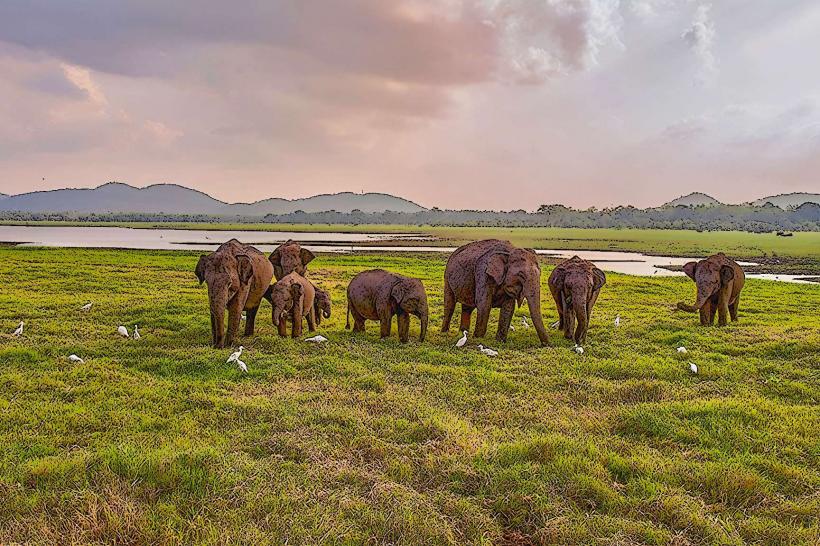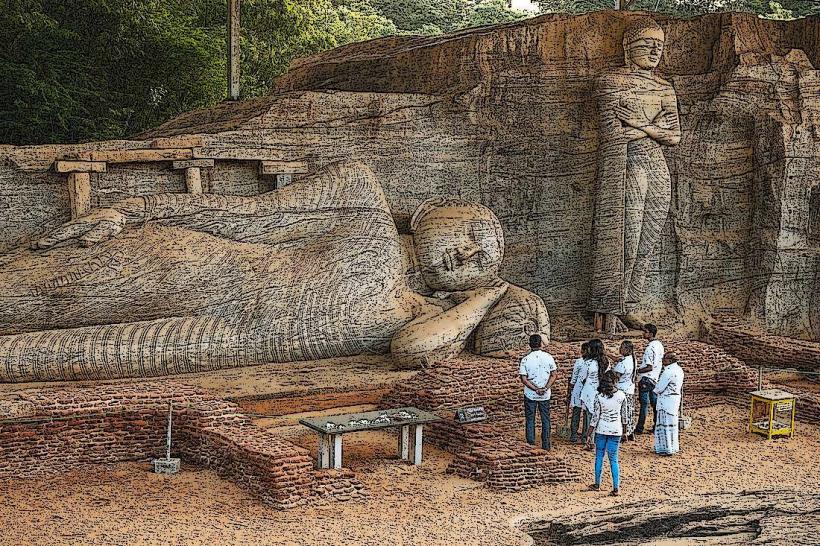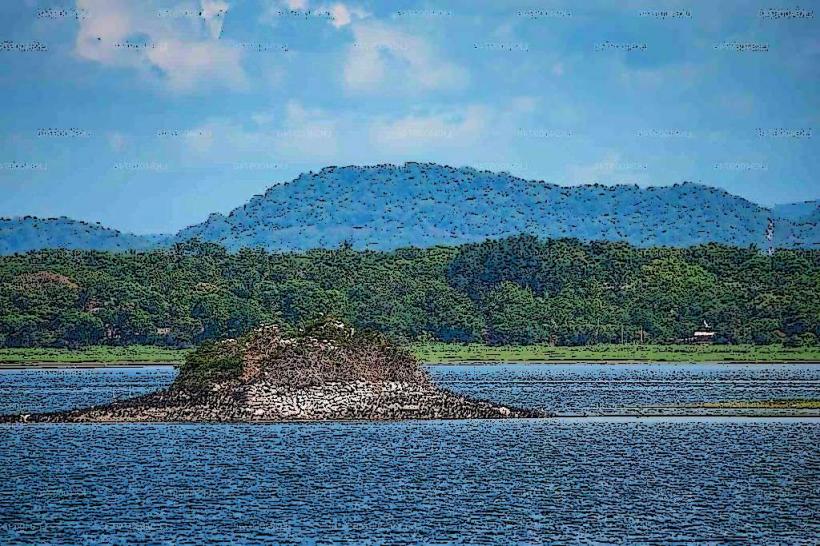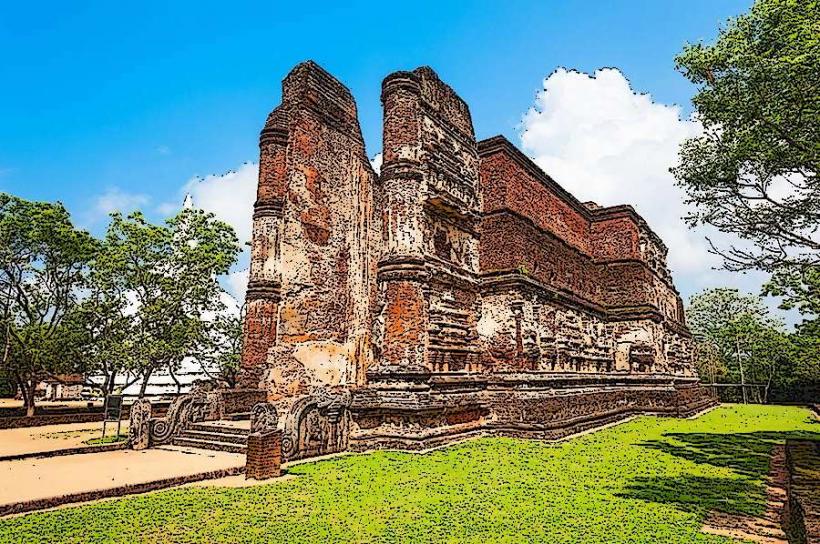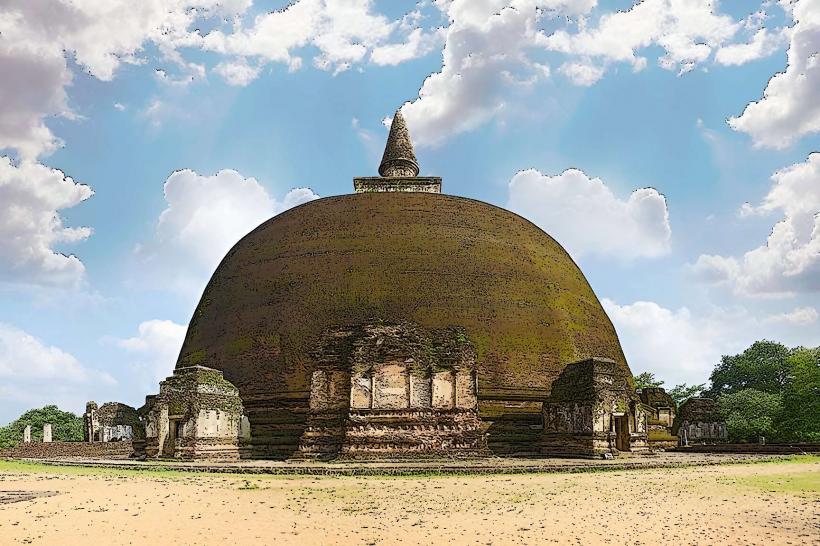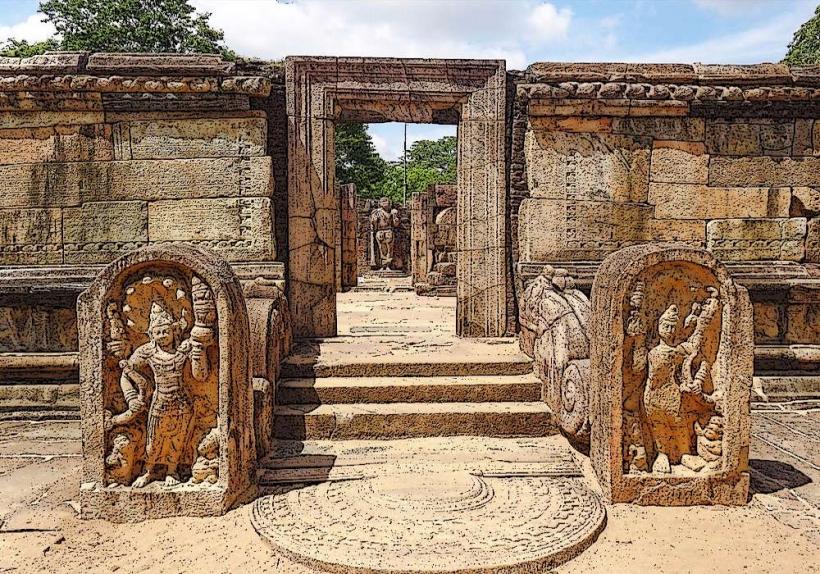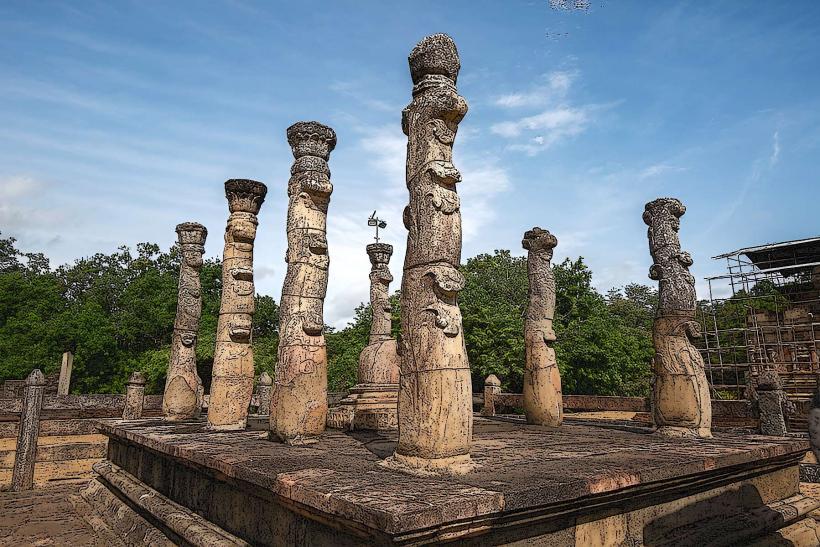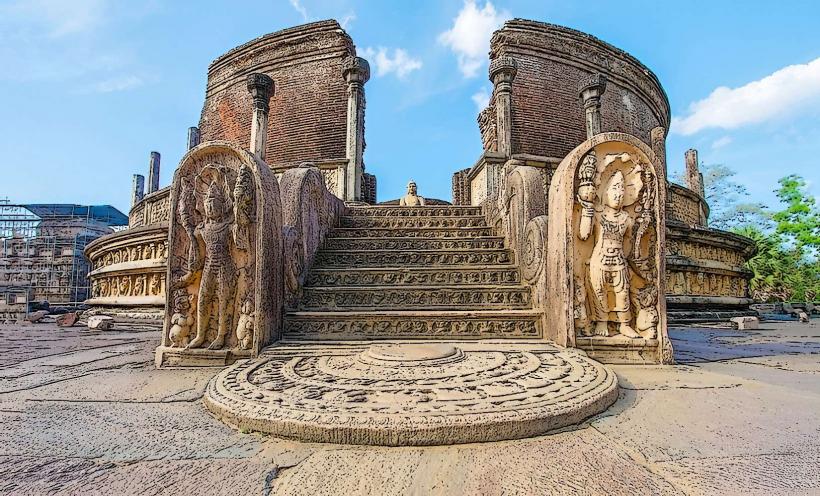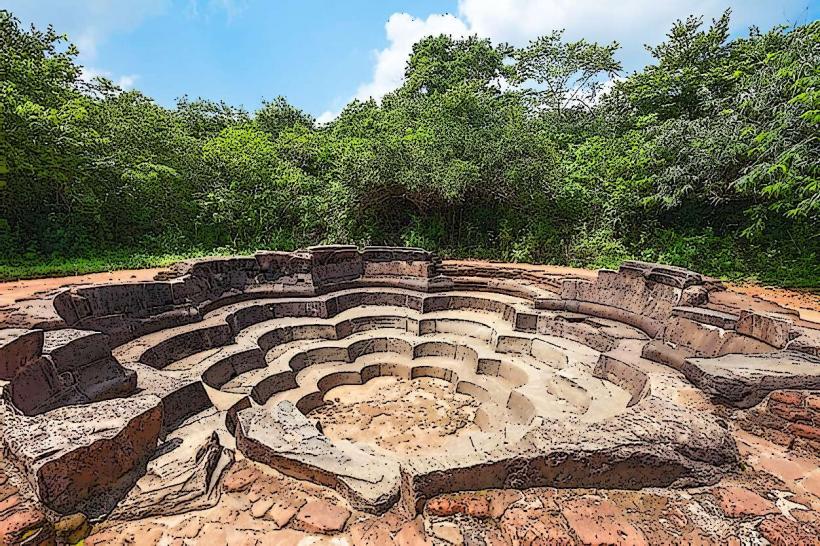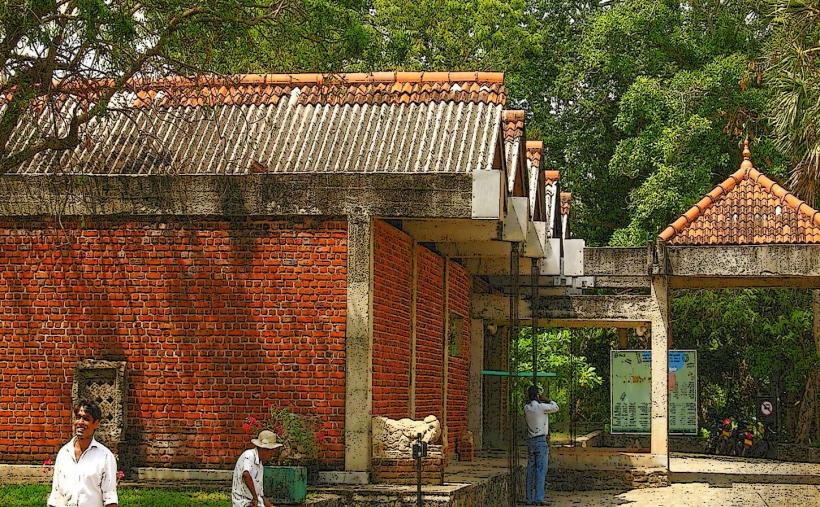Information
Landmark: Shiva DevaleCity: Polonnaruwa
Country: Sri Lanka
Continent: Asia
Shiva Devale, Polonnaruwa, Sri Lanka
Shiva Devale refers to a series of ancient Hindu temples dedicated to the god Shiva, located in Polonnaruwa, Sri Lanka. There are two major Shiva Devales in the Polonnaruwa archaeological site: Shiva Devale No. 1 and Shiva Devale No. 2, which are among the most prominent temples dedicated to Hindu deities in Sri Lanka. These temples are key religious landmarks and serve as important examples of Hindu architecture from the Chola dynasty era in Sri Lanka.
Overview
- Name: Shiva Devale (Shiva Devale No. 1 and No. 2)
- Location: Polonnaruwa, North Central Province, Sri Lanka
- Date: Constructed during the Chola occupation (circa 10th–11th century CE) and expanded during the reign of King Parakramabahu I (12th century CE).
- Type: Hindu Temples (Shiva Temples)
- Purpose: Religious Worship, Dedication to Shiva
Historical and Cultural Significance
Chola Influence on Sri Lanka:
- The Shiva Devales were built during the period of the Chola Empire’s occupation of Sri Lanka (circa 10th century CE), a time when the Chola dynasty had significant influence over the northern and central parts of the island. During this time, the Chola rulers introduced many elements of South Indian Hindu culture and architecture, which can be seen in the design of the Shiva Devales.
- The Chola influence continued even after their occupation, and the Shiva Devales became important centers of worship for Hindus in the region.
Shiva Worship in Sri Lanka:
- Shiva, one of the principal deities of Hinduism, is revered as the destroyer and transformer in the Trimurti (the Hindu trinity). In Sri Lanka, particularly in the northern and central regions, Hinduism has historically coexisted with Buddhism, and Shiva worship has played a significant role in Sri Lanka’s religious diversity.
- The Shiva Devales in Polonnaruwa reflect the importance of Hindu religious practices and were places of worship, where rituals, ceremonies, and offerings would have been made to the deity.
King Parakramabahu I’s Contribution:
- During the reign of King Parakramabahu I, the Shiva Devales were likely renovated or expanded as part of his restoration and promotion of religious sites in Polonnaruwa. While he was a devout Buddhist, his kingdom was also home to significant Hindu populations, and he respected the religious practices of all his subjects, including Shiva worship.
Key Features of Shiva Devale No. 1 and No. 2
Shiva Devale No. 1:
- Structure: Shiva Devale No. 1 is the more elaborate of the two temples, with a structure that includes pillars, a shrine for the deity, and stone carvings. It has a rectangular floor plan and is surrounded by a walled precinct, providing a space for religious ceremonies.
- Sanctum: The inner sanctum of the temple would have housed an image or lingam (the symbol of Shiva). The temple was designed to provide a sacred space for rituals and offerings to the god.
- Stone Carvings and Decorations: The temple features intricate stone carvings depicting various Hindu deities, including Shiva and his consort Parvati, as well as other symbolic imagery associated with Hinduism.
Shiva Devale No. 2:
- Structure: Shiva Devale No. 2 is smaller than No. 1 but still contains many important features of Hindu architecture. It has a similar rectangular shape and pillars, and the temple is believed to have been built or renovated during the time of the Chola influence.
- Lingam: Like Shiva Devale No. 1, it also likely contained a lingam in its sanctum, and rituals would have been performed here by the Hindu priests.
- Artistic Decorations: While less ornate than Devale No. 1, stone carvings and decorative motifs can still be found, showcasing the Chola architectural style that emphasizes symmetrical and orderly designs.
Architectural Style:
- The Shiva Devales follow the South Indian architectural style, which was characteristic of the Chola Empire. This style includes rectangular enclosures, stone pillars, and open spaces for ritualistic activities.
- The pillared halls and stone carvings reflect the Chola dynasty's aesthetic, emphasizing symmetry, geometric precision, and the integration of iconography representing Hindu deities.
Sacred Lingam:
- The lingam, a symbol of Shiva, is typically enshrined in the sanctum of a Shiva temple. The lingam represents the formless nature of Shiva, often accompanied by decorative elements such as serpent motifs. Rituals and offerings would have been made to the lingam as a form of worship.
Visitor Experience
Exploring the Temples:
- Visitors to the Shiva Devales can explore the remains of the pillared halls, stone carvings, and sanctuary areas. These temples are relatively well-preserved, and they provide insight into the Hindu architectural style that influenced Sri Lankan religious structures during the Chola period.
- The temples are part of the larger Polonnaruwa archaeological site, and visitors can also explore other nearby religious sites, such as the Royal Palace and Buddhist structures, creating a broader understanding of the religious and cultural landscape of the time.
Cultural and Religious Insights:
- Information boards and signage at the site offer explanations of the Shiva worship practices and the role of Hinduism in Sri Lanka's history. These details help visitors understand the significance of the temples within the context of Sri Lanka’s religious diversity and the Chola dynasty’s influence on the island.
- The Shiva Devales provide an opportunity to learn about the religious coexistence of Buddhism and Hinduism in ancient Sri Lanka, with each religion contributing to the island's rich cultural heritage.
Scenic and Historical Significance:
- The Shiva Devales are situated within the Polonnaruwa archaeological park, offering visitors beautiful views of the surrounding ruins and nature. The sites provide a quiet and reflective environment for visitors to appreciate the rich history of Polonnaruwa and its historical role as a center of religious activity during both the Chola period and later Sri Lankan kingdoms.
Conclusion
The Shiva Devales in Polonnaruwa stand as a testament to the influence of the Chola dynasty on Sri Lanka’s religious architecture. These temples were built to honor Shiva, one of the principal Hindu gods, and serve as important sites for Hindu worship in the region. With their stone pillars, intricate carvings, and historical significance, the Shiva Devales offer a glimpse into the religious and cultural practices of ancient Sri Lanka, reflecting the harmonious coexistence of Buddhism and Hinduism. Today, these temples are among the most important and well-preserved Hindu religious sites in Sri Lanka, offering visitors a unique opportunity to experience the island's rich spiritual heritage.

